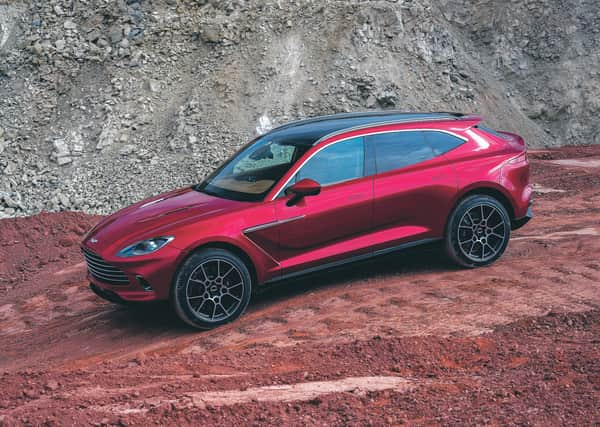Crossover fever: Marketeers’ magic for selling cars


What’re you driving? Just got a crossover. Went in to buy a Fiesta and came out with a Puma. Seems alright though at the moment as with the Covid-19 palaver I can’t drive it much.
Surely it’s more expensive than a Fiesta? That’s what I said to the salesgirl. She said it was a roomier larger car, with some great storage ideas and a higher road clearance. And it’s a crossover, innit.
Advertisement
Hide AdAdvertisement
Hide AdAn all-roader then? Well, not really. It’s only front-wheel drive, but I did take it into the woods for some logs and along a moorland track to start my designated hour’s walk the other day…


The term crossover can mean anything to carmakers. Transport historians will point to the 1970s when Subaru was selling an estate with 4x4 traction. Soon, American cars were being given more ground clearance and traction, while in Japan Honda had the Shuttle with 4x4 drive. By the mid-1990s what we knew as a 4x4, or Sports Utility Vehicle in the Americas, was domesticated for comfort and everyday practicality for European drivers.
The car in front was the Toyota RAV4. It may well be the first crossover. It had 4x4 drive, reasonable ground clearance, and a perky 2-litre petrol engine. The name was an acronym for recreational activity vehicle with the 4 indicating 4x4. Honda followed with the CRV, or compact recreational vehicle. Like the RAV4 it has a more compliant ride and extra grip. Subaru followed with the Forester, an excellent all-roader.
By the end of the decade BMW’s X5, on a unitary car-like chassis, from South Carolina was wowing the market. Mercedes-Benz was exporting its M-Class from Alabama.
Lexus joined in with the RX300 and soon they all started piling in. Porsche, known only for sports car, hit gold with the Cayenne in 2002. This car became the German brand’s best-seller.
As this century progressed, the term crossover was adopted or added to anything on four-wheels, well almost. The marketing people, the shadowy persuaders, are adept in adapting the language and skewing our understanding. The marketeers need a name other than estate car, even if that’s all the car is, with a few bells and whistles and cosmetics. The crossover and its ilk is in demand. Kia’s Sportage is a typical all-purpose crossover, part SUV, part hatchback. You can have a sports crossover, a sports activity crossover, or call your car many things. Ford, for example, points out that the Puma crossover has bold SUV exterior styling.
One could blame the whole SUV-cum-crossover caboodle on the Second World War. The Americans needed a light land car and the result was the Willys general purpose car, or jeep. Shortly after the war the Willys inspired Rover engineers to create a car they called Land-Rover. In America Willys became Jeep. Toyota and Nissan and other Asian carmakers were also inspired by the Willys.
The latest big guns include Rolls-Royce with the Cullinan, launched immodestly to the media in Wyoming, made in Sussex. It is “the world’s first super-luxury all-terrain SUV”. Preceding it was Bentley’s Bentayga, aka “the most luxurious, hand-built, all-terrain vehicle ever made”. Sharing some of its VW-Group DNA is the Lamborghini Urus, which we are told has the soul of a sports car and the functionality of an SUV and is “the first super sport utility vehicle in the world”. This 650 horse power Italian bull will nudge 190mph and looks wonderful but surely stretches beyond bursting the idea of utility? But that’s the snag.
Advertisement
Hide AdAdvertisement
Hide AdThey know we buy SUVs and crossovers. So Aston Martin is making one, which it calls the DBX. Billed merely as a luxury SUV, it immediately becomes the most expensive car ever made in Wales, at £158.000 plus the side orders from the options list.
You could argue over a snifter in the Camshaft Arms (when it re-opens for trade) that these bonkers luxury SUVs are actually crossovers or coupés or estates.
My mind is inspired by crossovers before they were crossovers. There was the 1948 Citroën 2CV, designed to mobilise rural France, taking produce to market and traverse a field without cracking an egg. Its more refined companion was the Dyane. In 1968 Renault gave us the Renault 6, sometimes called the mountain goat. It lacked the cuteness of the Renault 4 but was more practical.
Land Rover set the luxury trend with its V8-engines 1970 Range Rover. It was an amazing leap into luxury from the agricultural and uncomfortable Land Rover station wagon which hadn’t changed much since the 1950s.
The Range Rover went from a hearty three-door 4x4 with a swill-out interior to become a premium 4x4, capable of beating everything listed so far in outright off-road ability.
The good news is that most of these vehicles are remarkably good. A Bentayga even improves on Range Rover swank but costs an extra £50,000. The bad news is that, mostly, the bigger they are the badder they are for emissions and gulping fuel. Apart from the ones which really work and use their ability for heavy towing or off-road duties or proper country life, they are over-engineered and a superfluous elitist life-style accessory if all you do is shop, commute, take the children to school. The other good news, they may make you feel good, safer, maybe a crossover for your image.
Comments
Want to join the conversation? Please or to comment on this article.